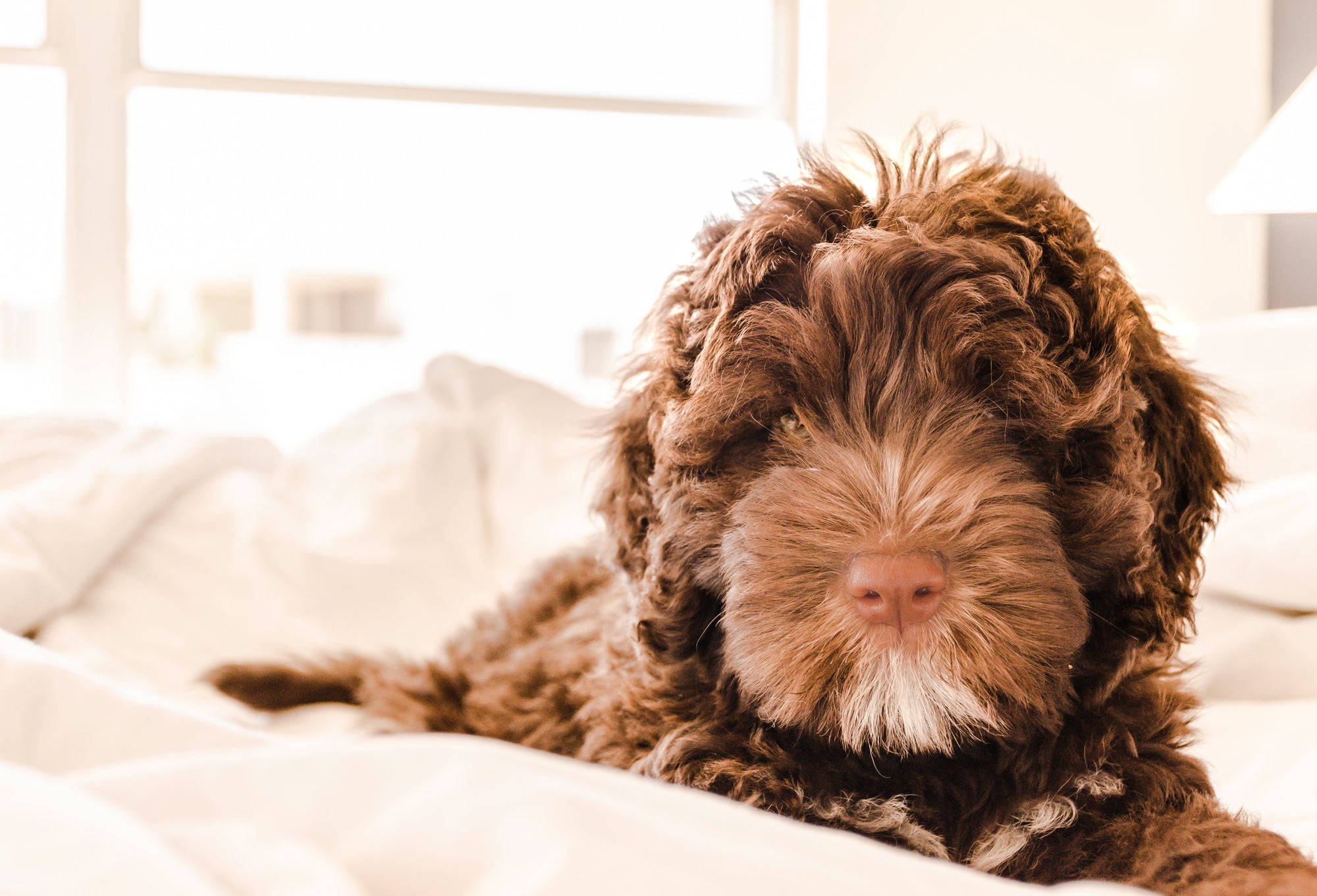

· By Dr. Jill Lopez
What Dogs Do When We Aren't Home
Have you ever wondered what your dog gets up to when you aren’t home?
From sitting in the window (wistfully awaiting their beloved owners return) to pacing around the house or sleeping away the afternoon, dogs spend lots of time alone. In fact, according to research carried out in Sweden and shared in a paper titled “Pet dogs home alone: A video-based study,” 73% of puppy parents leave their dogs at home during the 9am – 5pm workday.
Yet despite being by themselves for several hours on a daily basis, no one truly knew what dogs did.
Until now.
As people return to the office, we know more dogs will be left at home alone. Learning about what dogs do during this time is a great way to prepare your pooch for being calm and content. Get them ready from the second you leave until the moment you are reunited at the door with a big wet kiss!
Caught on Camera: 3 Common Separation Related Behaviors
Nobody wants a stressed-out dog.
But due to the incredible restraints of the past two years, many dogs are not accustomed to being alone. The good news is, with training, practice, and occasionally medications, it is possible for dogs to successfully be left by themselves.
Keep in mind, the American Kennel Club (AKC) recommends 6 – 8 hours being the maximum length of time a dog can go without human interaction.
In a video-based study, researchers Stephan, Leidhold, and Hammerschmidt discovered the following three dominant behaviours in dogs who were left alone for long periods of time in either single or multi-dog households.
Here is what they found.
Vocalization
Have you ever listened to a sad Husky cry?
It’s a howling one never forgets!
While many dogs whimper during the first few minutes of isolation, a dog who barks or howls endlessly when separated from their owner could be experiencing serious anxiety. Cameras set up to watch 100+ dogs found that male dogs have somewhat higher vocal activity than female dogs, particularly in multi-dog households.
So, if your dog cries as soon as you close the door, it could be helpful to set up a camera (or wait outside) to see how long the vocalizations carry on for.
Hopefully, it only lasts a minute or two.
But if the howling continues endlessly, this could be sign of canine separation anxiety that needs to be addressed.
Destructiveness
In a perfect scenario, all dogs cuddle up in their bed and nap peacefully until their owners return.
However, reality is a different story. Almost everyone remembers a time when their dog chewed furniture, destroyed toys, or scratched walls and windows. Destructive behavior is a sign of boredom and stress – both of which can occur when a dog is left at home alone for too long.
Physical Activity: Pacing and Playing
Lastly, cameras set up to watch dogs have found that surprisingly, the majority of dogs are not overly active when left alone.
They would much prefer to lazily lounge away the morning!
That being said, anxious dogs are prone to pacing. A second dog can help ease separation anxiety, since research shows that physical activity levels are higher when two or more dogs are left alone (but with each other for company).
Easy Ways to Avoid “Alone Time” Problems
The simplest way to stop unwanted behaviors from popping up?
Easy! Be home more.
Of course, this is unrealistic. Not everyone can work from home or madly dash through traffic during a 30-minute lunch break to visit their lonely pup. Luckily, there are simple steps dog parents can take to make their dog’s time alone at home less stressful.
One idea is to have a dog walker, neighbour, or friend visit. Even ten minutes will break up the day and provide much needed mental stimulation! Additionally, you can give your dog a treat puzzle or dog food toy, put on soothing music, make sure they are exercised before you head out, and provide a comfortable spot for them to wait until you return.
With a little planning, dogs can be left at home alone. While their human is at work or off running errands, a well-trained dog will simply relax, snooze, look out the window, and wait for you to come home…without getting up to any trouble!
Brave Paws Anxiety and Stress Support Chewables may promote calm behavior in dogs who exhibit nervousness or anxious behavior. Our clinically-studied and patented botanical blend contains naturally occurring bioactives, including betulinic acid, which have been found to promote a sense of calm and relaxation in dogs.
